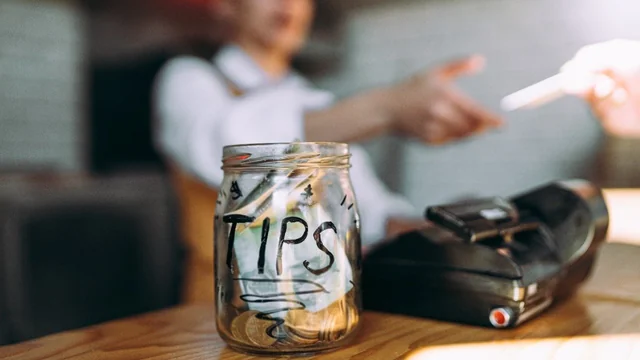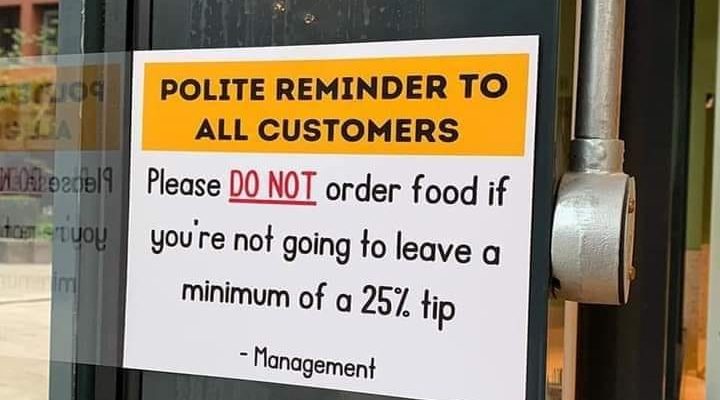Here’s how much most Americans tip
A recent report from CreditCards.com reveals that tipping in the U.S. generally falls between 15% and 20%. The report shows that men, Republicans, and people from the Northeast tend to tip around 20%, while women, Democrats, cash payers, and Southerners tip a bit less.
A server at a high-end restaurant suggested to CreditCards.com that men might tip more when aiming to impress someone. However, Michael Lynn, a professor at Cornell University, noted that other studies indicate there’s actually no significant difference in tipping habits between men and women.
No matter the factors of gender, political views, or region, tipping habits usually boil down to one key element: “Your tipping tendencies largely come down to income,” Schulz said. “That’s certainly not the only factor, but generally, the more money you have, the more likely you are to leave a little extra on the table at the end of the night. After all, it’s easier to tip a few extra bucks when you’ve got the money to spare.”
The survey further found that people earning $75,000 or more tend to tip both more often and more generously. Those using “plastic” also tend to tip more, as Michael McCall, a consumer behavior professor at Michigan State University, explained to CreditCards.com: “when you pay with a card, your brain doesn’t see it as real money, so it’s not as painful.”
For a precise guide on how much you should tip, continue reading.

How much to tip in different situations
While most restaurant-goers understand they should tip their server for good service when dining out, other services often bring confusion about both the amount and who should receive a tip.
According to a study by CreditCards.com, 67% of respondents said they tip their hair stylist, 29% tip coffee shop baristas, and 27% tip housekeeping staff. Interestingly, older people are less likely to tip their hair stylist, while individuals without children are more likely to tip their barista.
Below are some tipping suggestions on amounts and recipients, according to tipping.org:
- Bartender: 10% to 15% of the bar bill, or at least $1 for inexpensive drinks.
- Bellhop: $10 for luggage delivery; $5 for showing the room.
- Cab (taxi or ride-sharing) driver: 15% of the fare.
- Concierge: Up to $10.
- Contractors: $30 for staff; $50 for the lead worker.
- Counter servers: 15% of the bill, or at least $1 for very small orders.
- Food servers: 15% to 20% of the bill.
- Furniture delivery: $5 to $20 per person, depending on the job.
- Gas station attendant: $1 to $2 for pumping gas; $5 for other services.
- Hair stylist: 15% of the bill.
- Hotel maid: Up to $10 per day, depending on the length of stay.
- Manicurist: $1 or more (depending on cost); $5 to $10 for more expensive jobs.
- Massage therapist: 10% to 20%.
- Movers: $10 to $20 per person for a small move; $20 to $50 for a larger job.
- Pizza delivery: Up to $5 depending on the order and distance.
- Shampooer in hair salon: $1 to $2.
- Tattoo artist: No tip is required, but some people leave up to $50 or more depending on the complexity and cost of the tattoo.
For services not listed, check out the tips landing page on tipping.org or refer to a graphic from Real Simple for guidance.
It’s important to remember that tipping “rules” can change. For example, tipping for ride-share services like Uber is relatively new, though Lyft has allowed tipping since 2012. Some people worry that Uber’s customer rating system might be influenced by tipping practices: drivers might give lower ratings to customers who leave small tips, possibly discouraging future pickups. However, tipping experts say that you should tip a ride-share driver similarly to a taxi driver. As tipping expert Constance Hoffman explained to MarketWatch, a $1 or $2 tip, or more for longer or traffic-heavy rides, is a good rule of thumb. This guidance also applies to food delivery drivers, like those for UberEATS.
When should you break the tipping “rules”?
In cases where service is poor or the provider is openly rude, a smaller tip can send a subtle message that the experience was negatively affected and that “bad customer service” doesn’t deserve a reward.
In general, completely omitting a tip is often discouraged. A better approach? Etiquette expert Lizzie Post from the Emily Post Institute suggested to Smarter Travel that with poor service definitively caused by the server, you might not tip the full 20%, but you could leave a 15% or 10% tip and then notify management about the unsatisfactory service.
Remember, if food or drinks are delayed, it’s not necessarily the server’s fault—it could be the kitchen, bar, or staffing issues. So, what types of behavior do warrant a reduced tip? Here are some legitimate reasons for tipping less.

